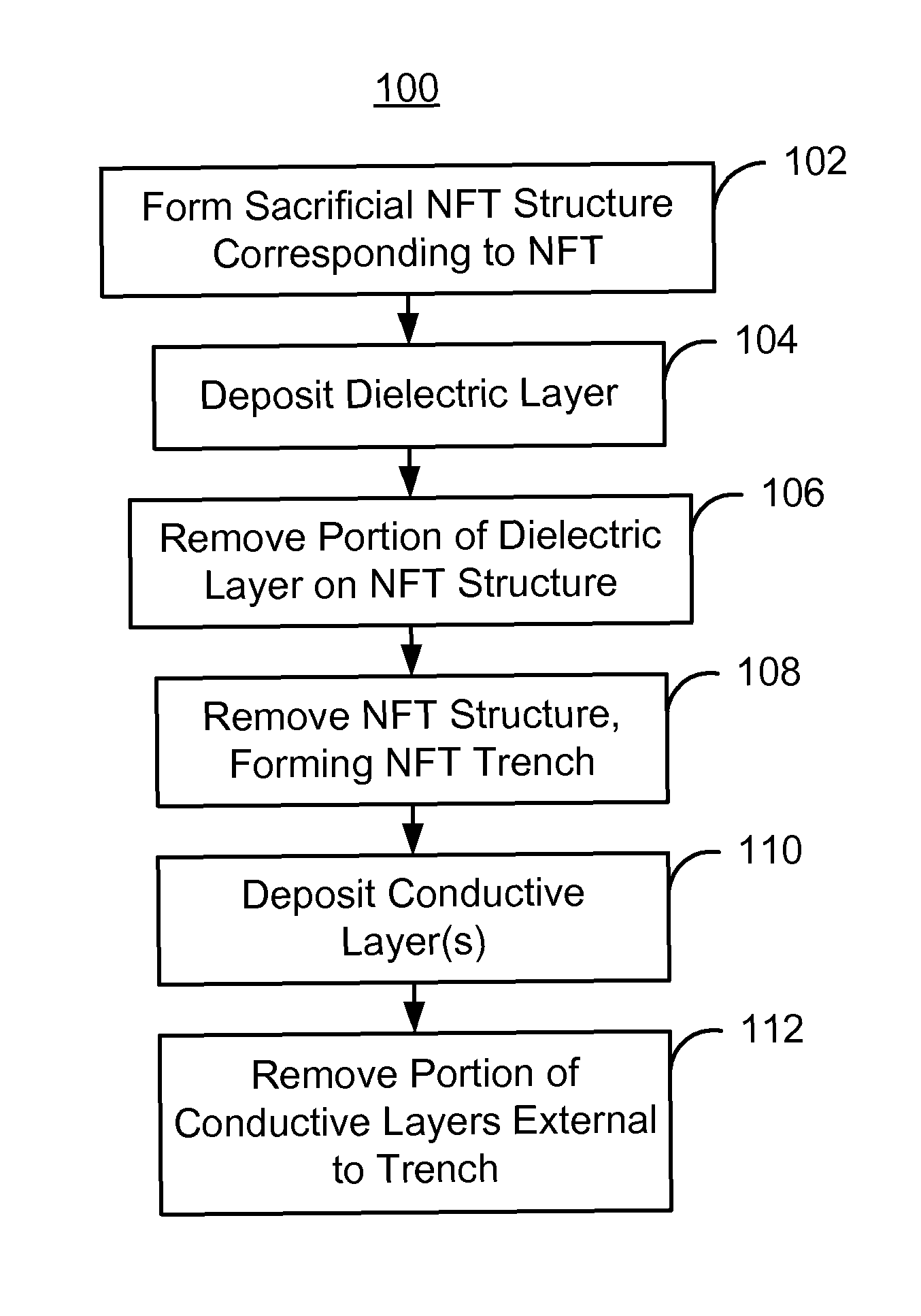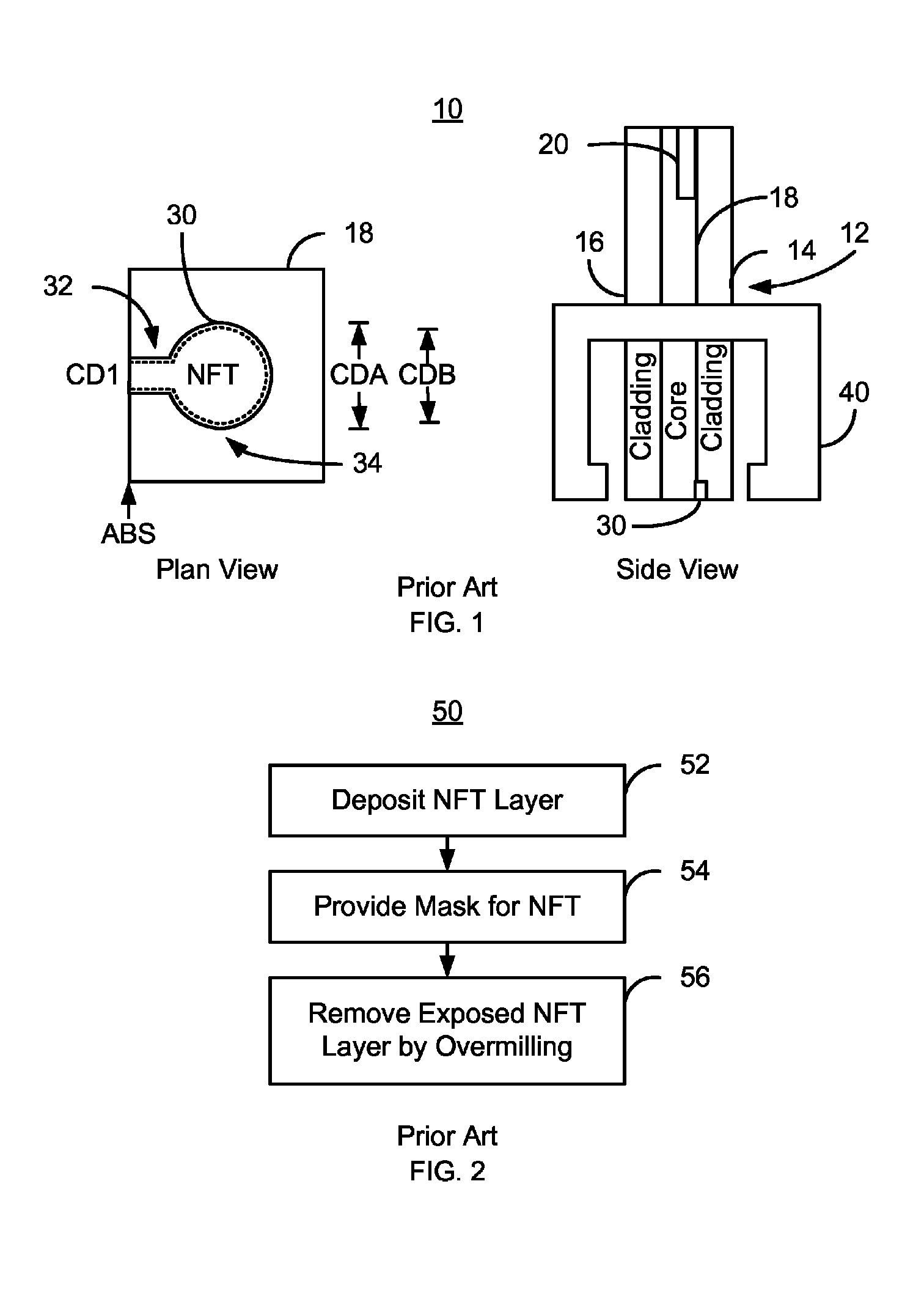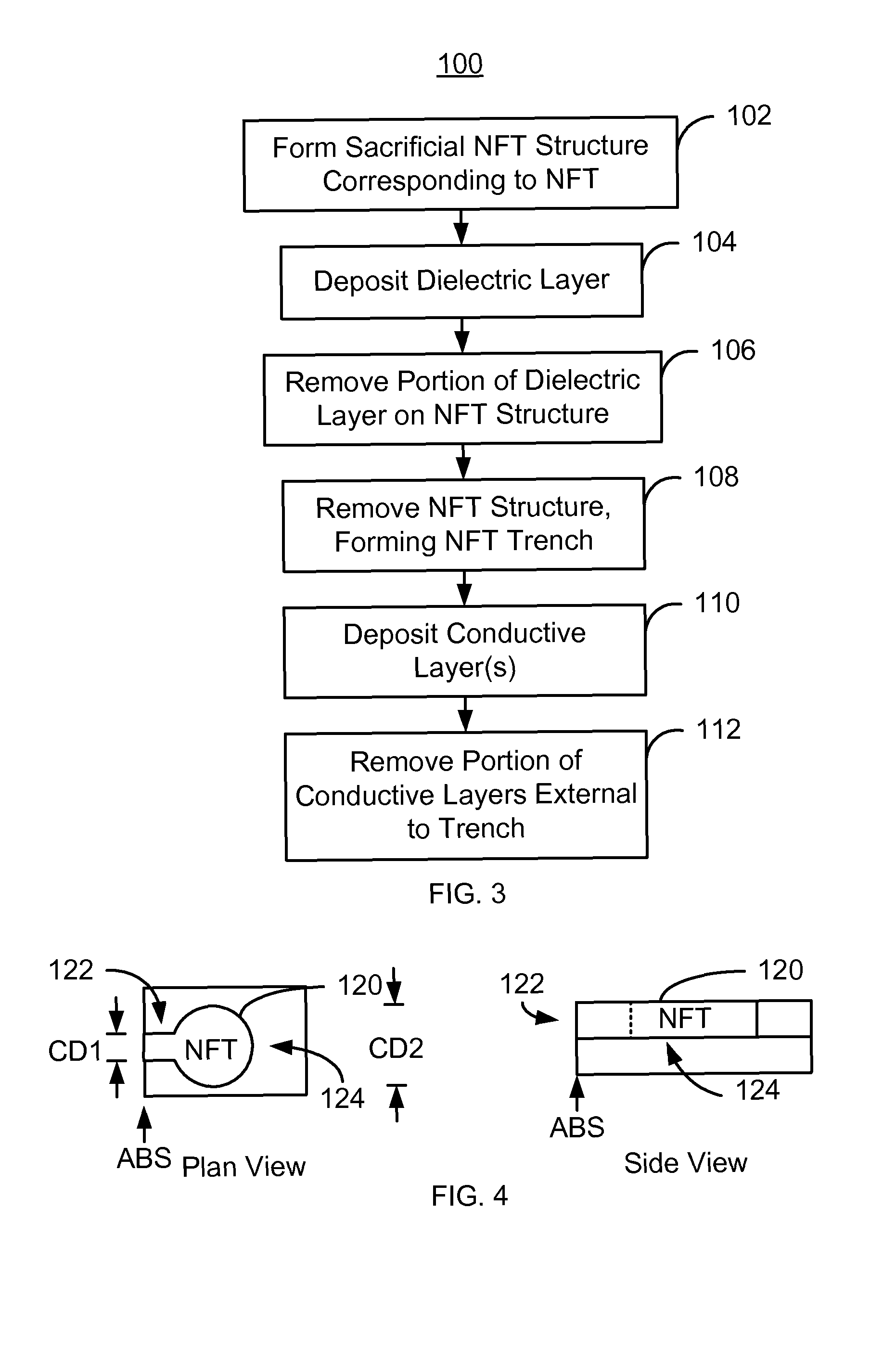Method and system for providing an NFT using a sacrificial NFT structure
a technology of nft and sacrificial nft, which is applied in the field of providing an nft using a sacrificial nft structure, can solve the problems of low yield and/or higher variations of the underlying waveguide of the conventional nft, and achieve the effect of reducing the cost of production
- Summary
- Abstract
- Description
- Claims
- Application Information
AI Technical Summary
Benefits of technology
Problems solved by technology
Method used
Image
Examples
Embodiment Construction
[0013]FIG. 3 depicts one embodiment of a method 100 for fabricating an NFT for an EAMR transducer. For simplicity, some steps may be omitted, interleaved, and / or combined. The EAMR transducer being fabricated may be part of a merged head that also includes a read head and resides on a slider in a disk drive. The method 100 is also described in the context of providing a single EAMR transducer. However, the method 100 may be used to fabricate multiple transducers at substantially the same time. The method 100 is also described in the context of particular layers. However, in some embodiments, such layers may include multiple sub-layers. The method 100 also may commence after formation of other portions of the EAMR transducer. In one embodiment, the method 100 commences after formation of portions of the waveguide, such as a core. Thus, a flat surface for formation of subsequent structures may have been provided. Certain steps of the method 100 may be combined, omitted, performed in a...
PUM
| Property | Measurement | Unit |
|---|---|---|
| Angle | aaaaa | aaaaa |
| Dielectric polarization enthalpy | aaaaa | aaaaa |
| Shape | aaaaa | aaaaa |
Abstract
Description
Claims
Application Information
 Login to View More
Login to View More - R&D
- Intellectual Property
- Life Sciences
- Materials
- Tech Scout
- Unparalleled Data Quality
- Higher Quality Content
- 60% Fewer Hallucinations
Browse by: Latest US Patents, China's latest patents, Technical Efficacy Thesaurus, Application Domain, Technology Topic, Popular Technical Reports.
© 2025 PatSnap. All rights reserved.Legal|Privacy policy|Modern Slavery Act Transparency Statement|Sitemap|About US| Contact US: help@patsnap.com



